Weird Science - Tales from the
Vectrex Academy Lab
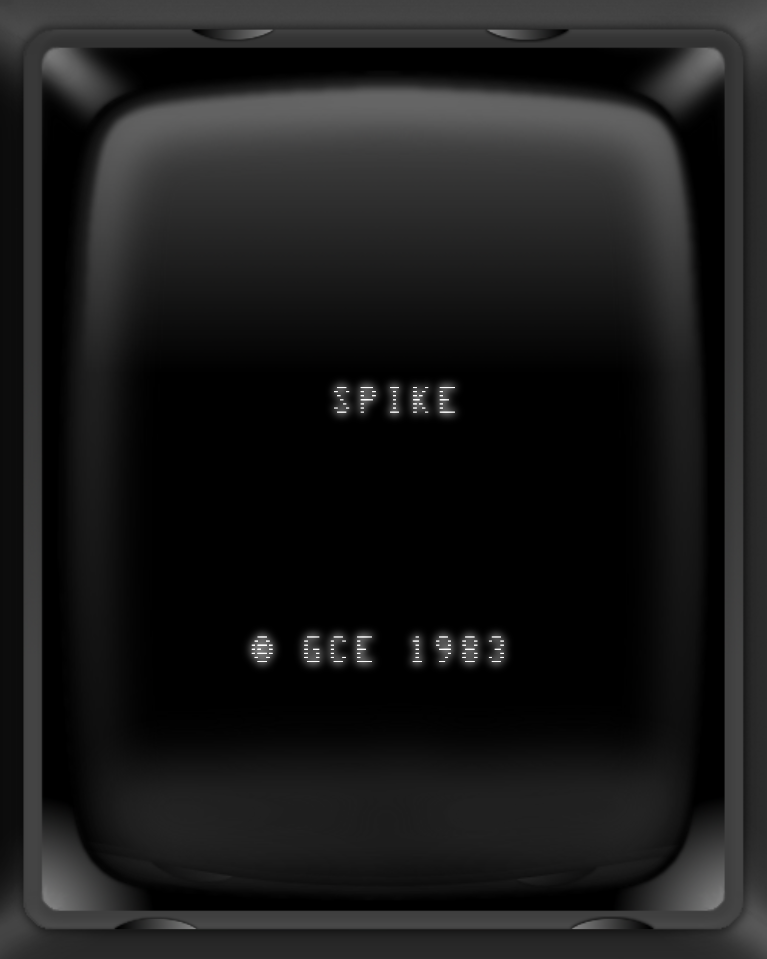
Vectrex
Project Title
- Digital Archeology - SPIKE
Project
Status
Synopsis
- A short analysis of the original Spike cartridge
and source code
- Some findings of questionable usefulness...
Spud is an
odd-looking Smoker?
- Something odd
that caught my eye while playing Spike. Not
sure if anybody else has ever noticed this
before?
- In the intro cutscene, when Spud captures Molly,
the Spud figure is drawn with some "flaws", making
it look a bit odd. However, the cutscene is so short
and fast, that this (at least in my case before) is
very hard to notice.
- Here are pictures of Spud, as shown in the
Spike Manual, and on the Spike Box:
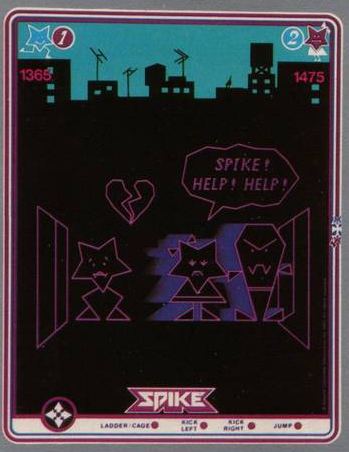 
- However, the left picture below shows how Spud is
effectively drawn in the cutscene. The vertical line
at the top of his face, going down to his eyes,
should not be visible. And so should be the line
going down from his left brow to his left tooth.
Also, the cigar he is smoking is drawn slightly
inaccurate, and there are some other tiny gaps in
the vectors.
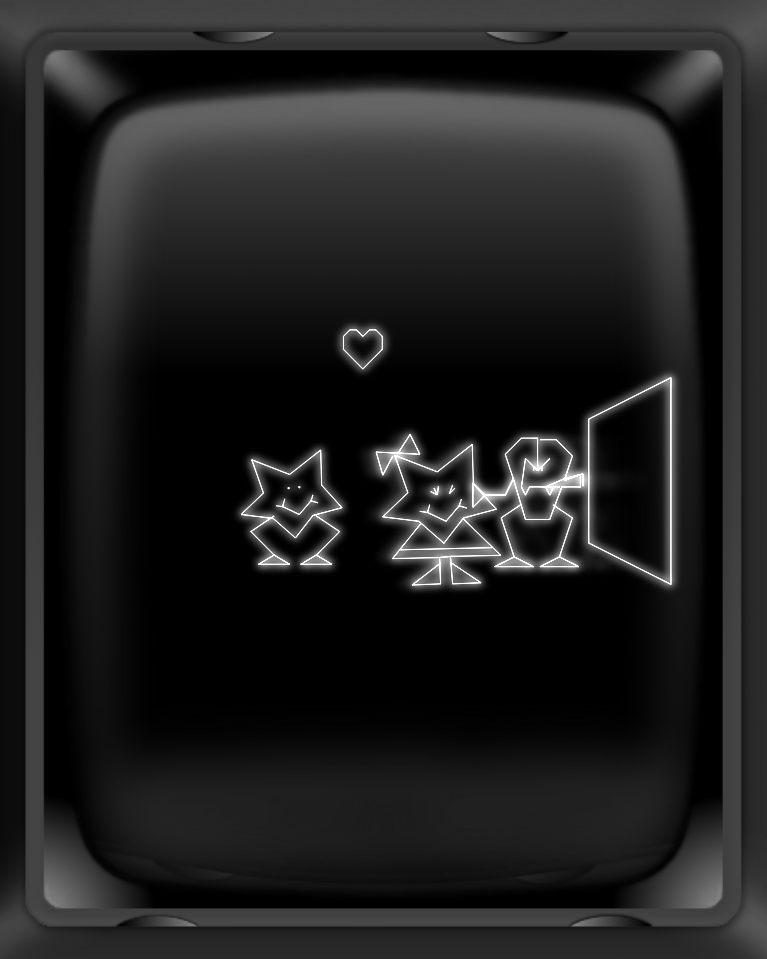 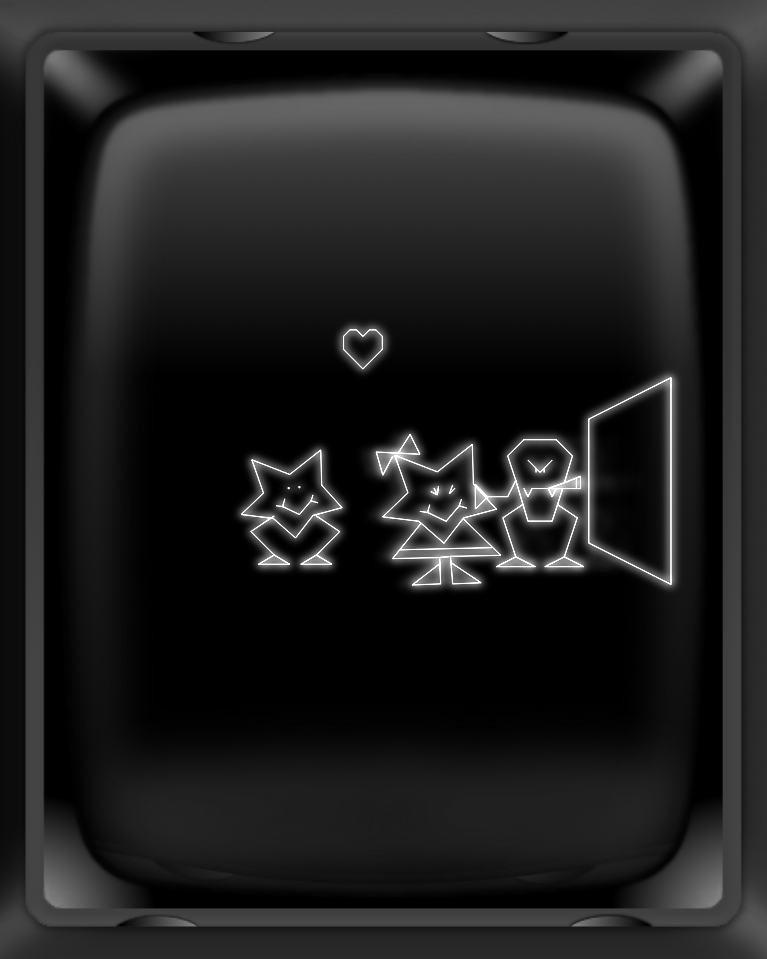
- The picture on the right above
shows how the scene looks like with these flaws
fixed, which is probably the way it was intended
to be.
- I can only guess why the
programmers decided to draw Spud the way they
did: They had likely run out of bytes and still
had to fit the complete game into 8K. So they
could not use the (more costly) vector-list
format which also allows invisible vectors
(moves). Thus they had to draw the complete Spud
figure in-one-go, using the more space-efficient
vector-list format which has visible vectors
only (no moves). But that is just a theory of
mine.
A bit more
regarding the Cutscene Animations
- The animations of the cutscenes are incredibly
well made. The movements of the legs and arms of the
protagonists are very smooth, and a lot of love was
put into details, like e.g. Molly blinking her eyes.
- The instructions of the cutscene contain the
following interesting part (in pseudo-code
notation):
if (direction_of_Spud_movement_is_left)
{
//
Spud entering
draw_Molly();
}
else
{
//
Spud leaving with Molly
draw_Molly();
}
- What is interesting here is that in both cases
Molly is drawn in exactly the same way. The
case-switch here is completely useless. So why is it
in the code?
- My guess is
that in some earlier stage of development, a
different routine was used for drawing Molly
while she is being dragged out of the room.
This routine required additional code and
additional vector-data. And for the same
reason as supposed above, later this feature
was cut and removed when the programmers
needed to fit the final version into 8K of
ROM space. And the easiest way to do this
was to simply patch-in the same
subroutine-call into the else-branch as used
in the if-branch.
- Again, this is
just a theory of mine, but what might
support it is one of the pictures that are
printed on the back of the GCE version of
the Spike box (this is not to be found on
the MB version of the box). It is shown on
the left below:
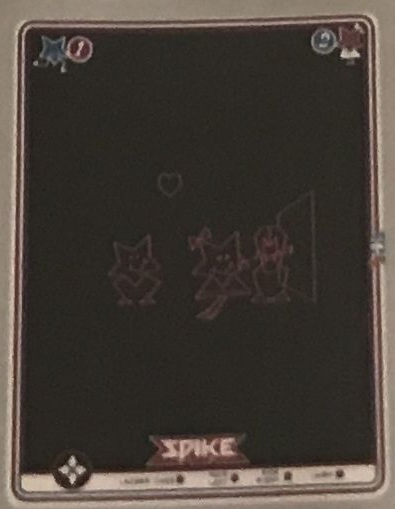 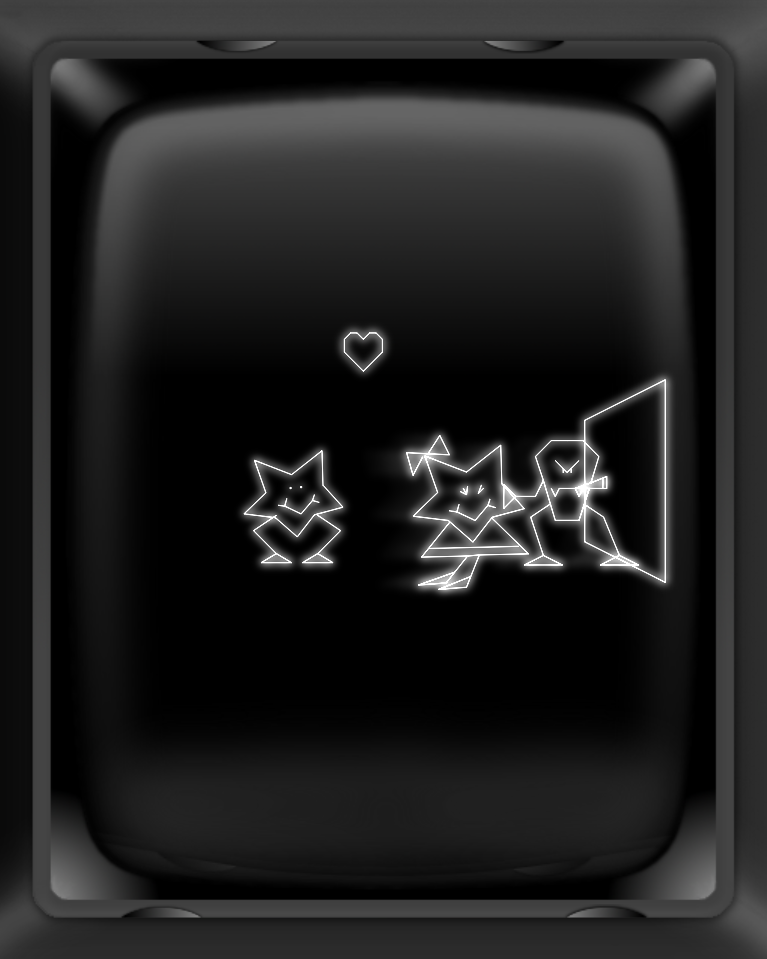
- I do not own the
GCE box, and the only picture I found is this
low-resolution image, but here Molly's feet are
drawn in a different way, slanted to the left.
Maybe this box image was captured from an
earlier version of Spike? I tried to recreate
that look, shown in the above picture on the
right.
- If someone reading
this here owns the GCE box, could you please be
so kind and take a better resolution picture of
the box and mail it to me? That would be highly
appreciated. Contact see below.
How Sound
Samples are played in Spike
- I had always
assumed that Spike uses the usual and
straightforward way of playing sound
samples. Like in recording the sound "Eek"
at a specific sample rate, storing the
sampled data, and then playing it back at
the same rate. Turned out, my assumption was
wrong.
- The Spike code
uses parts of a complex speech engine, which
creates the sound of words by putting
together and replaying samples of the
phonems of which those words do consist of.
Simply put, in order to let Molly say "Eek",
the Spike code contains sample-data for the
"e"-sound and for the "k"-sound, and also
some meta-data that tells the sample-playing
routine to first process the "e"-sound and
then to follow up with the "k"-sound. Later,
the very same "k"-sound sample-data is also
used for the "k" when speaking "Spike".
- This is very
much like it was done in the SAM
(Software Automatic Mouth)
text-to-speech program, that became popular
on various 8-bit systems in 1982. That
software allowed the user to type in any
text which was then parsed and split into
phonems, for which the corresponding
sound-samples then were played back.
- The Spike code
does not contain a full text-to-speech
engine, but only the raw sample-data of the
phonems of the words which are used in the
game. So there is no (straightforward) way
to make Spike e.g. say "Hello Vectrex".
However, the meta-data does include
information regarding the speed, the pitch,
and the degree of echo which is to be used
with the phonems, and the sample-playing
routine preprocesses the phonem-data
accordingly. So, for example, to a certain
limited degree it is possible to let Spike
speak slower, or Molly with a slightly
deeper or even more metallic voice.
- Spike uses a
sample resolution of 2 bits, which means
that only four different volume levels are
used for playing the samples. The effective
volume levels are taken from a hard-coded
look-up table.
- Sample data is
space-efficiently stored in bytes, i.e. each byte
contains four 2-bit samples.
- If my
measurements are correct, then the sound
samples are played effectively at a rate of
7500 Hz to 8000 Hz.
- See this
blog entry written by Malban for more
information about Vectrex sound samples.
Credits
- Again, this
analysis would not have been possible
without Vide.
- Continued
thanks to Malban for once more adding new
features I suggested or asked for.
Patched Spike Version
- Please note that this ia just an
experimental patch, not meant as an
alternate game version.
- spike_patched.bin,
containing the following
modifications:
- Title
text changed
to "SPUD" and
year changed
to "2024"
- Spud
vector-list
modified as
shown in the
respective
picture
further above
- Molly
vector-list
modified as
shown in the
respective
picture
further above
- Downloads
are free and
for
non-commercial
use only. Use
at your own
risk.
Online Playing
- Link
to Dr. Snuggles' online emulator to
directly play the game in your
browser: Spike
Patched
- For comparison: original Spike
Author
Latest
modification on 07/05/2024, 09:00
|
